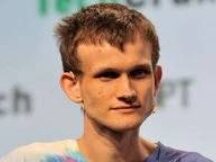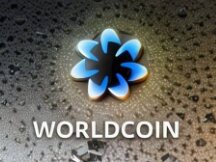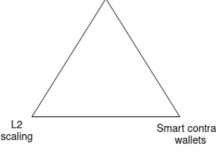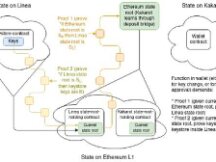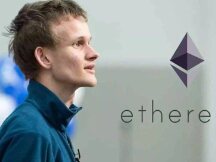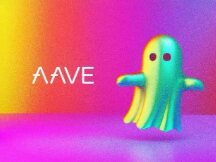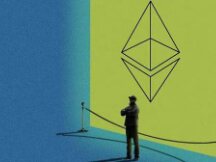Vitalik: The end of blockchain expansion

Let's talk about "blockchain with large blocks". This means that the blocks are built multiple times, have a small size, and can make thousands of changes per second, but this is very important. Each block is so large that only tens or hundreds of nodes can work all together, form blocks or inspect current chains. So, at least from my perspective, how can such a channel accept trust and resistance to censorship?
Here is a practical guide.
Add a layer of staking with less need to know anti-fraud laws. A trade block is divided into 100 small areas (buckets), each with a Merkle or Verkle tree state. Each staker in this staking layer is randomly assigned to one of the buckets. A full block is only accepted when at least 2/3 of the users are in each bucket signing group.
show evidence of fraud; WhereZK-SUA, the user can directly (at a lower cost) check the validity of the block. ZK-SNARK can be directly validatable by cryptographic blocking. Proof of fraud is an easier solution. This means that if a block has an incorrect bucket, anyone can post evidence of fraud on the bucket. This method provides another layer of security based on the placement of validators.
Pin upData availability sampling(Who), allows users to identify blocksperformance. When analyzing the use of DAS, the lightweight user only needs to extract a special part of the block to determine whether the block is declared or not.
Add secondary businesses to prevent censorship. One way would be to allow players to submit lists of certain markets, so the next big bloc would have to have those changes.

What will you gain by completing the above declaration?We will get a blockchain with special protection that will prevent manufacturers from proving (for commerce), while the blockchain generation is still in the middle, but blocking evidence is unreliable and has serious implications.. This chain is a little ugly in design, but it provides the simple guarantee that we are looking for: Even if all the major sponsors (block makers) of this chain try to pull or censor, they can do anything wrong. At this point, the chain should not agree to any changes until the community raises capital and creates fair staking nodes.
Now think about the future which could be long of competition ...
If the new Arbitrum, Optimism, zkSync, StarkNet or Rollup is a really good version on a powerful device, just think of the special Rollup that will make that Rollup real. Process 10,000 transactions per second. In general, the skills required in this area are well known and used many years ago by Dan Larimer et al. Achievements are made by CPU threads (not equal but cheap to do business logic) and many other threads (expensive but equally crypto turns). Consider Ethereum using sharding with Data Availability Sampling (DAS), with an average of 64 shards to store data on the chain. As a result, everyone will be moved to this tournament. How will the world be?

Again, we have a world where block production is paramount, but block evidence is unreliable, has serious side effects, and is still resistant to censorship.. Cumulative block producers are difficult to integrate because they have to make a lot of changes, but they cannot push the wrong blocks. The protection of blocks against the root chain and access to blocks is guaranteed by a competitive logic: is ZK-rollup, the security guaranteed by SNARK, and if the best cumulative, Proofer fair join (subsidized by Gitcoin grants ) as long as there are fraudulent nodes. ), then the network is secure. Additionally, the competitive process cannot be monitored, as users can choose to send the changes through the second packaging line.
Now think about other possible long-term perspectives for the race.
No Rollup cannot accomplish most of Ethereum's tasks. But the peak is the hundreds of transactions per second. We're getting a lot of Ethereum roll-ups going forward. Similar to Cosmos in many visions, but basically providing available information and shared security. Users often rely on bridge crossings to navigate the various rollups without having to pay a hefty price on the key fob. How will the world be?
Since each rollup is small and it's easy to start building blocks, it seems like you can have it all: decentralized validation, strong censorship resistance, decentralized block generation, and more. However, the decentralization of block production is “cross-domain MEV” (MEV interdomaine, ndlr : novRegisterInterconnected in a modular blockchain ecosystem (like Ethereum).blockchain network, interconnected strings, xws li tag strings, execution strings, L2s networks and future fragment strings in the Ethereum modular ecosystem.Register now"; MEV stands for" Maximum Extractable Value ", ie the maximum extractable value formerly called" Miner Extractable Value ".

Above: Inter-domain MEV period approved by Western Gate
Therefore, in many parts of the world having the same control group for the production of blocks in all areas tends to depend on them. It won't happen, but it is likely to happen, so you need to be prepared for it. What can you do about it? The best method we currently know of is to use a combination of these two methods:
Rollup uses idea to auction block production in all areas., WhereThe Ethereum process recognizes the developer / developer separation.(Producer / Developer Separation, PBS),or both. This at least ensures that the differences in centralization of block production do not lead to the identification of blocks controlled by the elite and controlled by centralized staking pools. .
CompleteBypass censorship prevention(bypass channel) and the Ethereum base layer are used.PBS censorship prevention technology. This clearly shows that if the winner of the key potential in the 'pure' blockchain industry wants to censor the industry, there is a way around the censorship.
What are the advantages of this?Block production is centralized and proof of block is unreliable, highly decentralized, and still resistant to censorship..

3 paths to the same goal
What does that mean?
There are many ways to create a large and secure long-term blockchain ecosystem, but all of them seem to create a similar future.The production of blocks will eventually be centralized.: The competitive profit network, or the “MEV competition” profit network, pushes us in the direction of diversity. What we can do, however, is “manage” this business using process-level processes such as group recognition, data structure, and multi-channel compliance. People can never abuse their power.
What does this mean for block producers?Block production has the potential to become a specialty industry, and professional recording will be used elsewhere. 90% of Optimism block producers will be good Arbitrum block producers, good Polygon block producers, and even good Ethereum base block producers. With so many managers, competitive advantage can be an important source of income.
What does this mean for Ethereum?First, Ethereum is a great place to make the transition to the world of the future, despite its uncertainties. ethereumRoll-up focused roadmapThe biggest advantage is that Ethereum is open to all futures without pretending that the future will never be victorious. Do you want your users to stay competitive? Under the existing approach, Ethereum could serve as a foundation and simply provide the anti-fraud and censorship-resistant "armor" needed to protect the original giants. Is capacity building technically complex? Or do users have a good need for diversity? Ethereum can also serve as a base layer, which is a great layer because it makes it easier and safer to exchange tools on rollups on a reliable basis.
But at the same time, Ethereum scientists must take into account the decision of which blockchain classification can be achieved. If “cross-domain MEV” (or cross-shard MEV) makes the distribution blockchain unstable, there is no need to add pipelines to complement large-scale business processes.

What does this mean for 'big blockchains'?For these blockchains, there is a reliable and censorship-resistant approach. We'll soon see if major developers and the community are paying enough attention to censorship protection and decentralization to embrace this standard.
It can take years to accomplish all of this. Partitioning and data availability sampling (DAS) technologies are used. It will take years of improvement and research for people to adapt to retain their assets on the ZK-Rollup network running the entire EVM. Cross-domain MEV research is still in its infancy. However, it has become clear that evolutionary blockchains include the real and the future.

Scan QR code with WeChat


